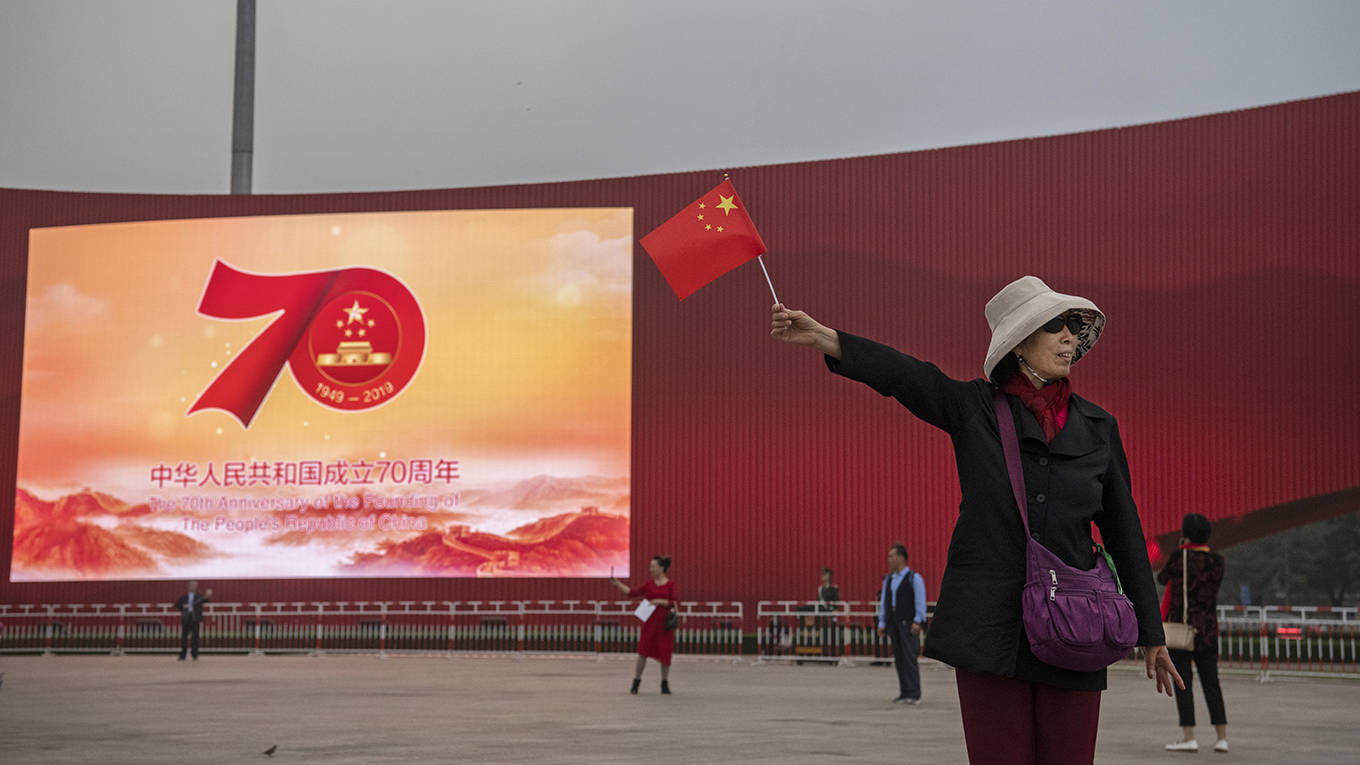 Recognizing that global engagement is in its interests, China's leaders have been working to counter the backlash against globalization and have reconfirmed their commitment to continued reform and opening up. But China does not need the world nearly as desperately as US President Donald Trump and his advisers seem to believe.
Recognizing that global engagement is in its interests, China's leaders have been working to counter the backlash against globalization and have reconfirmed their commitment to continued reform and opening up. But China does not need the world nearly as desperately as US President Donald Trump and his advisers seem to believe.
HONG KONG – On October 1, the People’s Republic of China celebrated the 70th anniversary of its founding with impressive military and civilian parades meant to showcase the extraordinary progress the country has made under the leadership of the Communist Party of China. Formidable challenges lie ahead. But China’s record so far, and the resources it has at its disposal, indicate that it may well be up to the task.
Even as Donald Trump’s presidency fast approaches the abyss, leading members of the Republican Party have stayed largely silent. As the Soviet dissident poet Alexander Galich wrote in the 1960s, “Keep silent, you will be on top.”3Add to Bookmarks
China’s achievements are undeniable. In the last 40 years, it realized the fastest-ever sustained expansion by a major economy, enabling more than 850 million people to escape poverty. As investment in infrastructure, science and technology, education, and health has expanded, living standards have skyrocketed.
But in the third quarter of 2019, China recorded just 6% annual growth, the slowest since March 1992. And prospects for boosting that rate are limited, not least because the world is facing a synchronized slowdown. In its latest World Economic Outlook, the International Monetary Fund downgraded its 2019 global growth estimate to 3%, the lowest rate since the 2008 crisis.
The outside world is also increasingly rejecting engagement, with the United States leading the way. President Donald Trump’s trade war has left no doubt that the US regards China as a strategic competitor, not a potential partner. Some in the US now advocate a complete decoupling of the world’s two largest economies, unless China makes fundamental changes to its political system, economy, and foreign policy.
China has not been the only victim of US protectionism; Trump has also targeted India, the European Union, and others. So, beyond direct animosity from the US, China must contend with profound and unpredictable geopolitical and economic shifts, driven partly by a backlash against globalization – the very process that enabled China’s rise.
Chinese leaders have been working to counter that backlash by highlighting the benefits of international trade and cooperation. They have also reconfirmed their commitment to continued structural reform and opening up.
As a recent McKinsey Global Institute (MGI) report showed, China has plenty of room for progress. The country accounts for 11% of global trade in goods, but only 6% of trade in services, underscoring the growth opportunities that a more developed services sector would provide. Moreover, foreign ownership in China’s banking, securities, and bond markets remains below 6%. And while Chinese tourists made 150 million outbound trips in 2018, the country receives only 0.2% of global migrant inflows.
Increased Chinese engagement with the rest of the world could, MGI estimates, generate $22-37 trillion of value for the global economy by 2040. In particular, China would benefit from import growth ($3-6 trillion), liberalization of services ($3-5 trillion), globalization of financial markets ($5-8 trillion), collaboration on providing global public goods ($3-6 trillion), and flows of technology and innovation ($8-12 trillion).
This is not to say, however, that China needs the world, at least not as desperately as Trump and his advisers seem to believe. While openness is in China’s interest – and the interest of those with which it engages – recent trade hostilities have highlighted the Chinese economy’s resilience.
In fact, given China’s scale, there is enough domestic economic competition to continue driving progress, even without external engagement. Few economies are large enough to test different development models in parallel, without worrying about systemic shocks. But that is precisely what China is doing.
China has a long tradition of experimentation and adaptation, with competition among cities, in particular, bringing development breakthroughs. The central government is now cultivating much larger urban clusters – the Greater Bay Area (covering nine cities around the Pearl River Delta in Guangdong province, plus Hong Kong and Macau); the Yangtze River Delta (centered on Shanghai); and the Beijing-Tianjin-Hebei cluster – to serve as platforms for further experimentation and competition.
Add to that significant scope for fiscal and monetary stimulus – thanks partly to a high domestic saving rate – and China’s leaders are more confident than ever that they can resist outside efforts to dictate its policies. The West should expect China to adhere to its policy of strategic patience, pursue further efficiency gains, and implement difficult but necessary reforms.
Throughout this process, China will continue placing the highest priority on maintaining social and political stability – a prerequisite for long-term economic development. As Harvard’s Dani Rodrik recently observed, “Give the state too much of an upper hand over society, and you have despotism. Render the state weak vis-à-vis society, and you get anarchy.” For China, ensuring that greater openness does not bring problems like instability or corruption demands a strong state.
The US-led unipolar global order is disintegrating fast, not because the world wanted that outcome, but because the hegemon did. This is a tragedy. But all China – or any country – can do at this point is adapt to the new reality. For now, that means maintaining internal stability and advancing development, while resisting outside pressure to act against its own interests.
No comments:
Post a Comment